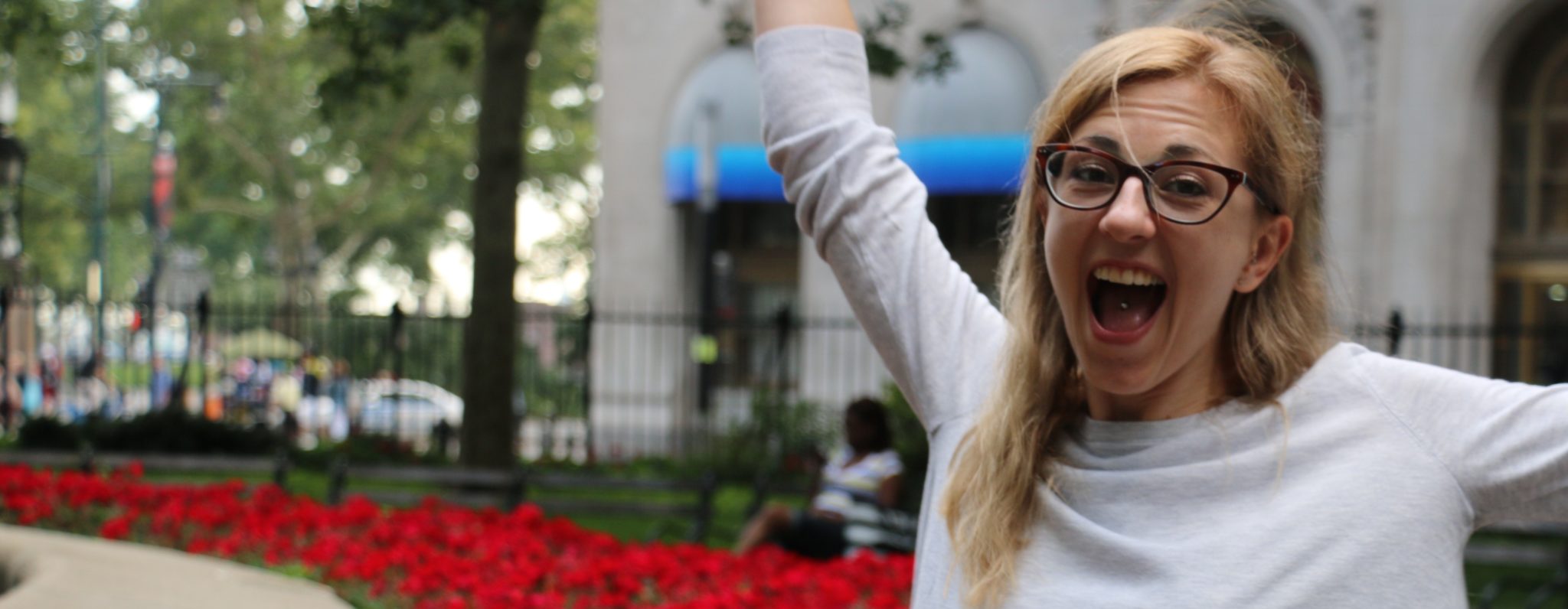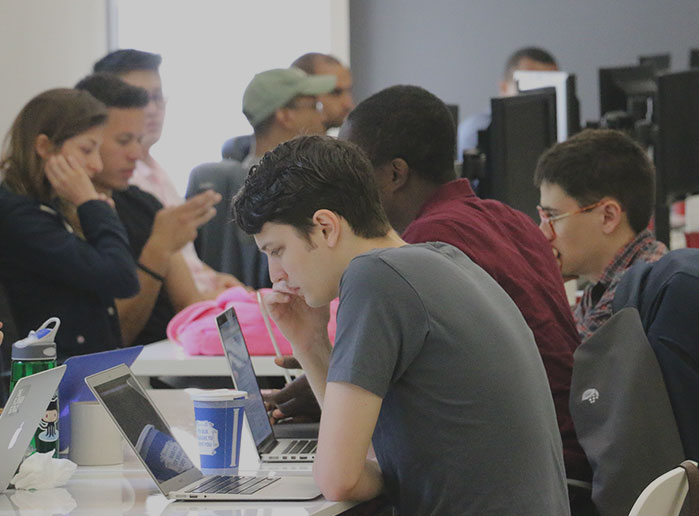Unconventional is a good descriptor for Hannah Nordgren’s path to becoming a developer.
Hannah’s first job as a teenager was at a taco stand, then she followed her love of fashion to New York and ended up becoming a professional hairdresser and freelance technical designer. Roughly a year after graduating Flatiron’s first Brooklyn full stack development class, Hannah now works at ESPN at a Project Web Developer, where she helps build custom executions and offer technical assistance and troubleshooting.
A connoisseur of bad movies, knitting, and her 1970s Peugeot Mixte bike, Hannah has found the time at work to learn about Node, Express, jQuery, and Angular as she finds creative solutions for complex problems. Hannah dropped by the other day to talk about what she’s learned since Flatiron and where she sees her career heading in the future.
How did you hear about the Brooklyn Fellowship, and why did you think it was right for you?
My friend Julie was working at Nifty Thrifty (a vintage online clothing store), and they needed a project manager who knew about clothes. At the time I was a hairdresser, working in fashion, and taking an intro to costume history class, so the job kind of married my two interests. The job was fun — I was doing little HTML and CSS projects on my own — but I couldn’t see a long term future there.
I saw a post for the Brooklyn Fellowship on Girl Develop It and decided to apply, but I thought, ‘I have no technical background, I’m not going to make it!’ I don’t know what I did to impress them, but I really turned the dials up to 11 and I focused on altruism and how I want to help people and make awesome things.
Explain one of the projects you’re currently working on.
I work on the technical arm of the ad production team at ESPN. It’s mostly dealing with any sort of advertising. If something needs to get built for an advertiser, we can do that, or if there’s troubleshooting things we can do that, too. The nice part is we started building tools to make account managers’ lives easier — for example, if they need specific data on something or need to find more out about how something works.
That’s where the learning curve is coming in for me and I’m really enjoying it. Pretty much, if we can dream it, we can build it — it just depends what’s the best tool for the job.
I had a white light moment working on the stuff I’m working on now…I realized there is creativity in things you can’t see on the front end.
How did Flatiron help prepare you for the rest of the learning you have done since you’ve entered into this job?
I learned a lot of technical stuff at Flatiron, but something else I got out of Flatiron was how to work with team members, how to collaborate, how to not be that lone wolf developer. You need to work through things and explain to people how it’s working.
Besides the collaboration, in any job I’ve ever had — from the first job I worked at a taco stand as a teen — I felt that it was so hard to get work. Flatiron gave me the tools to find a job on day one. They told us to start and update a technical blog, go to meet-ups, go for coffee with a potential employer. Whatever I end up doing in life, I’ll be able to apply that somehow.
What was the biggest challenge for you when you first entered the workforce after Flatiron?
Imposter syndrome! Something which I’ve more recently overcome. I was terrified that somebody was going to drop me into a situation and tell me, ‘We need this feature built by next week, you can do it, right?’ That was my worst nightmare. Besides that, I really just wanted to do the creative stuff, the stuff people are going to see. I was very, very font-end oriented. I didn’t want anything to do with rails and I was pushing hard not to be a fullstack developer.
Then I had a white light moment working on the stuff I’m working on now. I thought, ‘I’m shooting myself in the foot!’ It didn’t help that I didn’t want to touch rails. I realized there is creativity in things you can’t see on the front end, and if you’re really good at the technical aspects, then you can still get the same amount of joy from figuring out how something is going to work — whether or not people actually see it. With backend, you can build awesome things. Embrace it.
Where do you picture yourself taking these skills in the next few years?
I do think there is more of a role of designer/developer that I would like to cultivate, maybe 10 years down the road. I know I am still new and wouldn’t be qualified as a senior developer at this point, but eventually, I would love to have my own design and development firm.
Written byFLATIRON SCHOOL
Make yourself useful.

